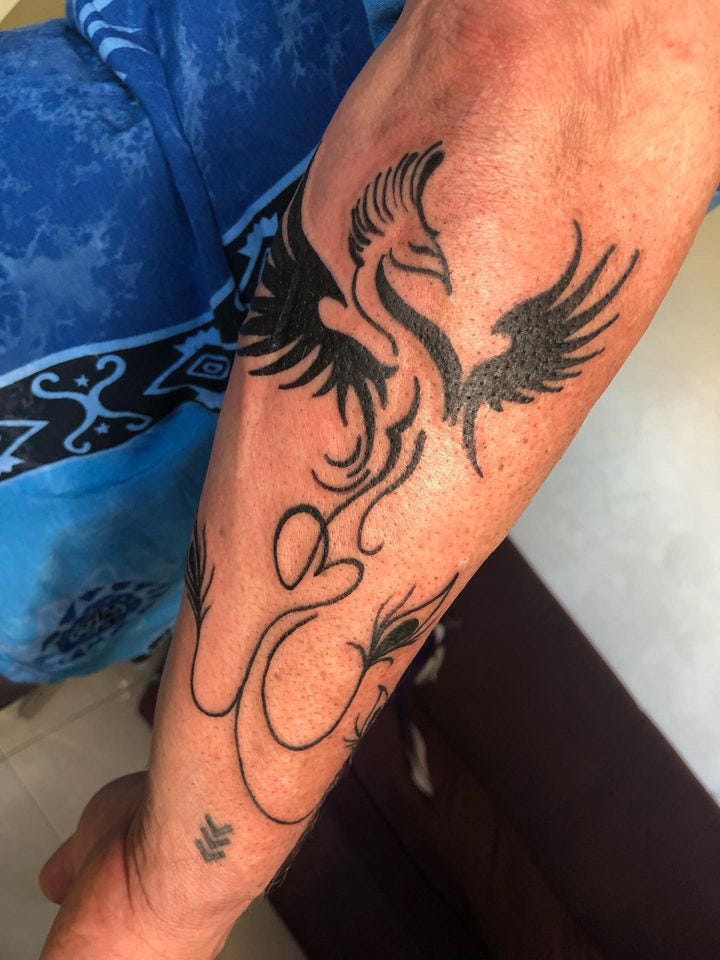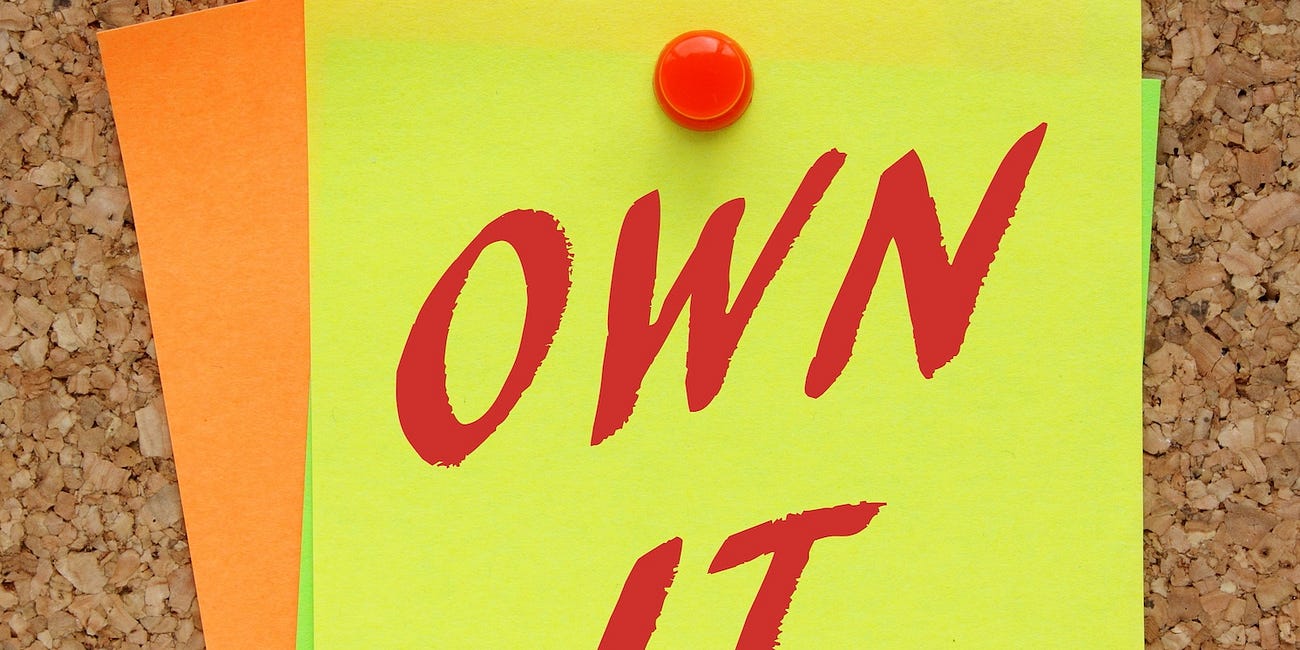Embracing Change: When Life Moves the Furniture
Change will keep coming. The question isn’t whether we’ll face change, but how we’ll meet it. With resistance or curiosity? With rigidity or flexibility? With isolation or connection?
This is the ninth (and penultimate) in my series of articles about ten qualities of a good human - dimensions of character to cultivate over a lifetime.
Change is coming for you. It’s coming for all of us. Six years ago, that meant ending my 23-year relationship. This year, I’ve finished full-time work at the company I co-founded, and I'm decompressing after decades of intense work with no clear agenda ahead. And wondering how to fill my days now that I am not governed by the ‘murder scene’ diary, chock-a-block with appointments, travel plans and endless To Do list items.
Fighting against change is like swimming upstream. It’s exhausting because change is a constant in all our lives, whether it’s planned or crashes into our carefully curated lives unexpectedly. The only choice we have is how we decide to manage the change.
Philosopher Alan Watts wrote:
“The only way to make sense out of change is to plunge into it, move with it, and join the dance”
We need to see change as our partner, not as an adversary. Although I am sure most would be like me, when you are in the thick of transition, it’s difficult to see how change is your friend.
We all live with change. Jobs disappear. Relationships shift. Our health wobbles. Whatever the change, the challenge remains: how do we move through the unsettled waters without losing ourselves?
Understanding the stages of transition
Few of us are zen masters floating serenely through life. Despite entire industries devoted to meditation and self-knowledge, most gloss over the heart of the issue: learning to be comfortable with discomfort and building resilience to get back up when we fall.
I’ve been reading William Bridges’ book “Transitions: Making Sense of Life’s Changes”; he makes a crucial distinction: change is external, transition is internal. Change is what happens to you (the job loss, the move, the breakup, the diagnosis, coming out). Transition is what happens in you: the psychological journey of letting go, wandering in uncertainty, and eventually finding your footing in a new reality.
This distinction matters because we often rush through transitions as if they’re just logistical problems to solve. But transitions aren’t problems. They’re processes. And processes take time.
Bridges identified three stages that we all move through during any transition.
1. The Ending: Every transition begins with an ending. You must let go of the old before embracing the new. This involves acknowledging loss, feeling grief, and mourning what was, even when the change is positive.
2. The Neutral Zone: The uncomfortable in-between space where you’ve left the old behind but haven’t yet arrived at the new. Nothing is clear. Everything feels temporary. This is where transformation actually occurs, old patterns break down, and new possibilities emerge.
3. The New Beginning Clarity and energy gradually return. You start seeing possibilities rather than problems. You’re no longer just surviving - you’re living into something new.
These stages take time and can’t be rushed. Trying to skip from Ending straight to New Beginning without honouring the Neutral Zone is where most people struggle with change. Understanding these stages doesn’t make change easier, but it does make it less frightening.
Living in the in-between
So many of us get stuck in the neutral zone, and I know I inhabited it after my separation. I lost my social circle and found myself lonely and adrift. The following year, Melbourne went into its extended COVID lockdowns, further exacerbating the disconnection I felt from the world around me. I gained some weight, let go of my exercise routine and felt stuck between what had been and who I might become.
Therapy was instrumental in helping me navigate the way forward. My therapist introduced me to an emotion wheel. Each week, I’d print it out and jot down notes next to how I was feeling. At our sessions, we’d discuss what triggered each note and explore the connected emotions. I read books like Robert Masters’ Emotional Intimacy, which profoundly affected how I saw myself and my relationships with people around me.
I wrote an article earlier this year ‘Zen and the Art of Not Getting Mad While Driving (Through Life):
“Today I’ve learnt to take a step back in my head, examine a strong emotion - and sometimes lack of one - and consider what has triggered the feeling, or the events that led to that moment in my head. I don’t have all the answers to regulating my emotions, but I know I’m calmer and more thoughtful.“
Those therapy sessions were the first time in my more than 50 years that anyone actually sat me down, asked “how are you feeling?”, listened attentively, and genuinely delved into each of my responses. I was learning a new language for my inner life; it was occasionally disorienting, sometimes frustrating, but over time, I’ve come to realise how essential this work was.
Eventually, clarity returns and your energy is rebooted; you can see possibilities ahead, colours instead of greys. It’s not some great revelation with angels on high blowing their trumpets, but rather a gradual transition into something new, as you move through and come out the other side of change.
For me, one key was taking back control of my physical health. I started swimming laps regularly and embraced my Pilates practice, taking two classes a week. I lost some weight and became stronger. After years of buzz cuts, I now have long hair, usually tied back in a messy ponytail. My tattoo collection has expanded, including a beautiful phoenix I added last year. I am such a different person inside and out from six years ago.

Building flexibility and finding possibility
Resilience isn’t about being unbreakable. It’s about being flexible. Holding fast in the face of change is not tenable. You must be adaptable, even if you start small, and learn to be flexible. If you practice with small disruptions, you are building capacity for larger changes. Resilience is not about grand gestures, but rather about small, repeated choices and about remaining curious rather than defensive.
I think it’s super important to point out that not all change contains a hidden opportunity; sometimes change just plain sucks. But even when the upheaval is shitty, it can create openings. Sometimes people lose jobs they thought they wanted, only to discover careers they actually love. Relationships end, creating space for healthier connections. Health crises reorder priorities in ways people later describe as essential.
Approaching change with the belief that something worthwhile might emerge (even if you can’t see what yet) changes your relationship with the experience. As Viktor Frankl wrote,
“When we are no longer able to change a situation, we are challenged to change ourselves.”
Supporting others through their transitions
When someone you care about is going through a change, your instinct to fix it might be the exact opposite of what they need. Change is lonely. What people in transition often need most isn’t advice or solutions. It is presence. I’ve learnt this vividly in recent times - friends grieving the death of a partner, others going through horrible conflict-ridden divorces from their exes.
I know I have the ‘save everyone’ gene; I’m the first to raise my hand and offer help. But sometimes that’s too much. Sometimes all that’s needed is presence: a quiet night on the couch with Uber Eats and a movie.
I’ve written before about the importance of lifting others:
“The beautiful thing about lifting others is that you don’t need special qualifications, significant resources, or formal authority to start. Some of the most impactful ways to support others are surprisingly simple and can be integrated into your daily life.”
Supporting people through change is one of the most meaningful ways we can practise that. Support doesn’t mean rescuing. It means showing up consistently. Checking in. Asking how they’re really doing and then actually listening.
Remember that change affects different people differently. Those navigating change whilst also dealing with homophobia, transphobia, ableism, racism, or other forms of discrimination face additional layers of complexity. Support means recognising these intersecting challenges.
You never fully master change. There are no medals or parades, nor a graduation ceremony where you receive your honorary doctorate in adaptability. Each new change brings its own challenge. But you do get better at it.
My series of articles about being a good human emphasises qualities such as being present, listening deeply, living with purpose, building authentic connections, living truthfully, and lifting others. They all connect in some way to ‘change’. Our capacity to embrace change is enhanced by our ability to be present with discomfort, to listen to what the change is telling us, and to connect authentically with others going through similar transitions.
Change will keep coming. The question isn’t whether we’ll face change, but how we’ll meet it. With resistance or curiosity? With rigidity or flexibility? With isolation or connection?
And perhaps most importantly, remember that you don’t have to embrace change perfectly. You just have to keep showing up for the process. Keep extending yourself a bit of grace. Keep trusting that you have what it takes to navigate whatever comes next.
Read the eighth in the series:
Taking Responsibility: Creating Positive Change Through Personal Accountability
This is the eighth in my series of articles about ten qualities of a good human - dimensions of character to cultivate over a lifetime.



